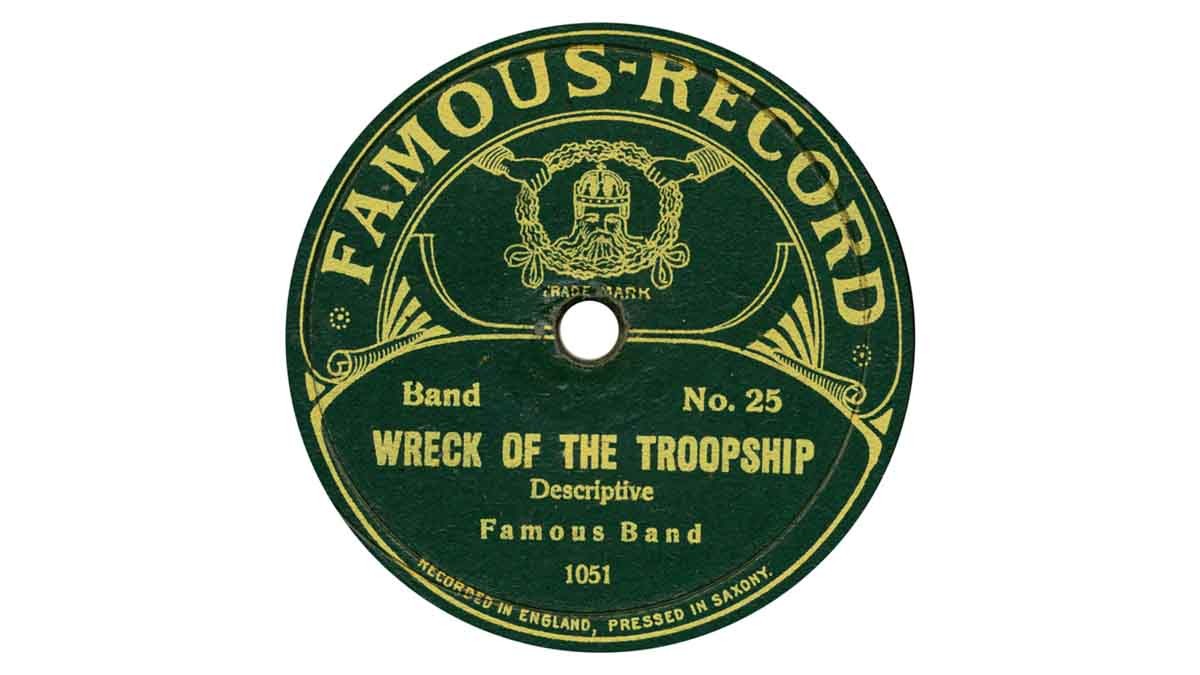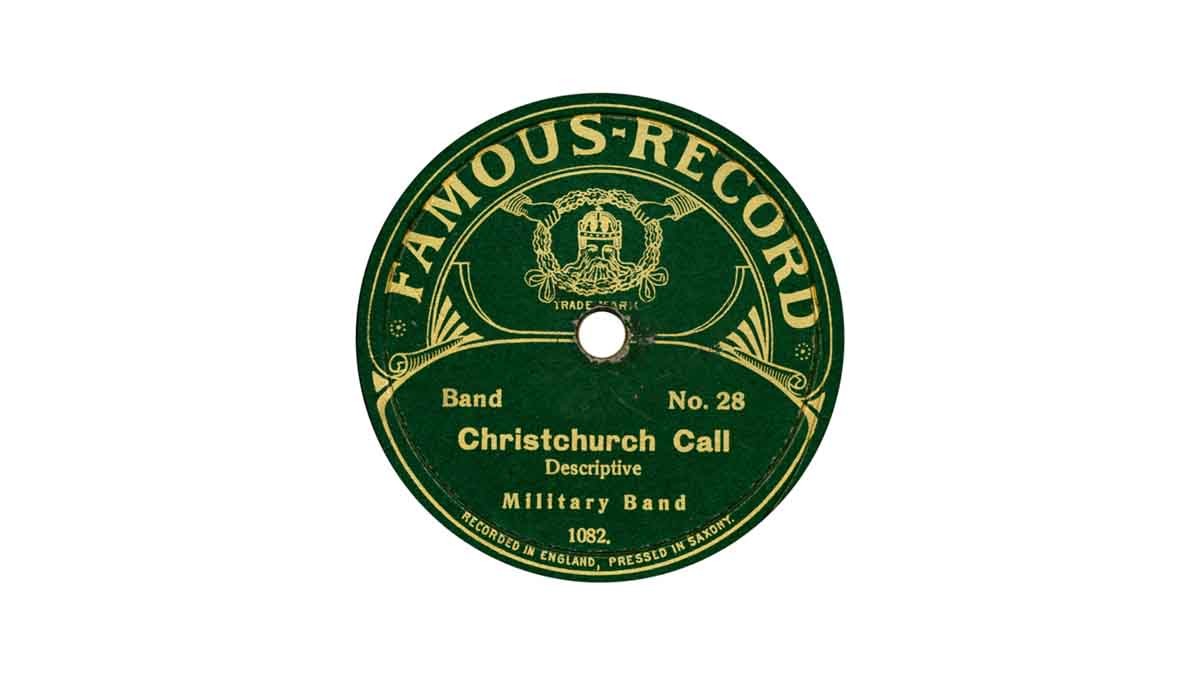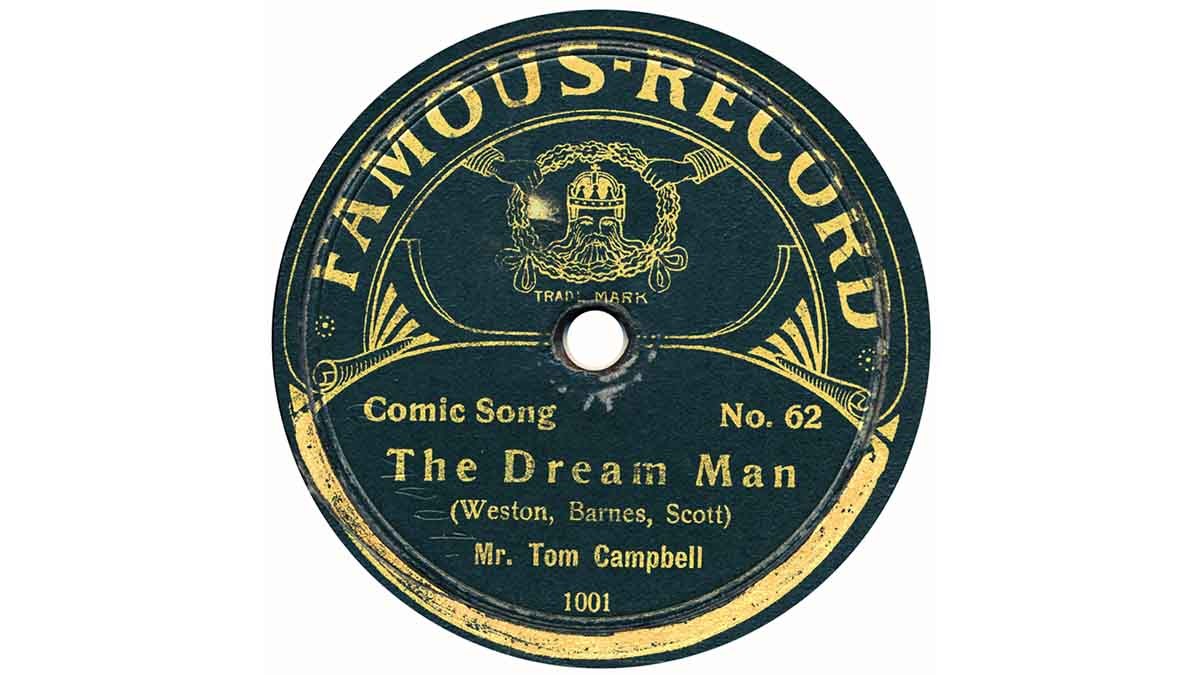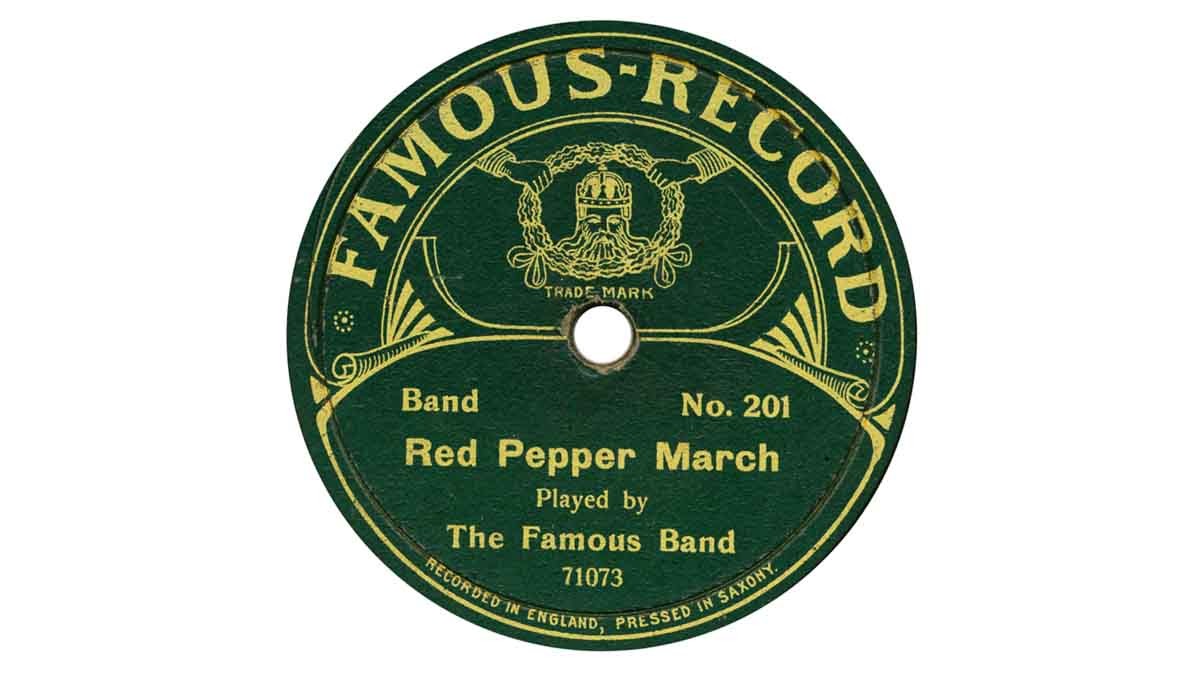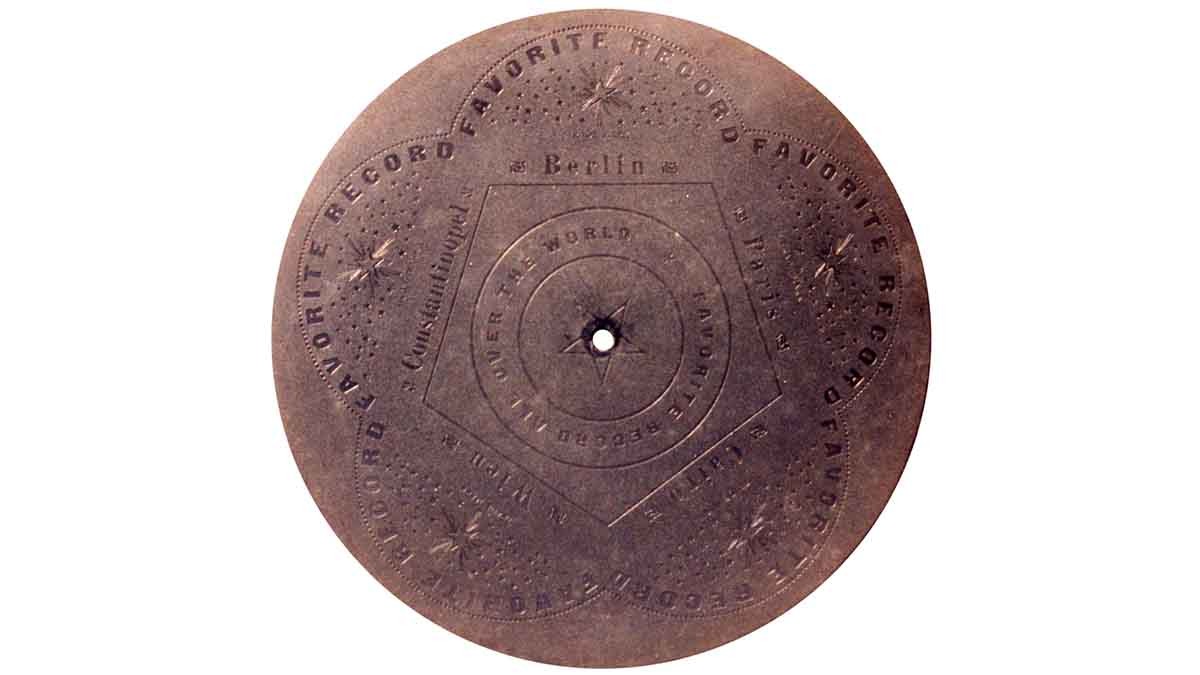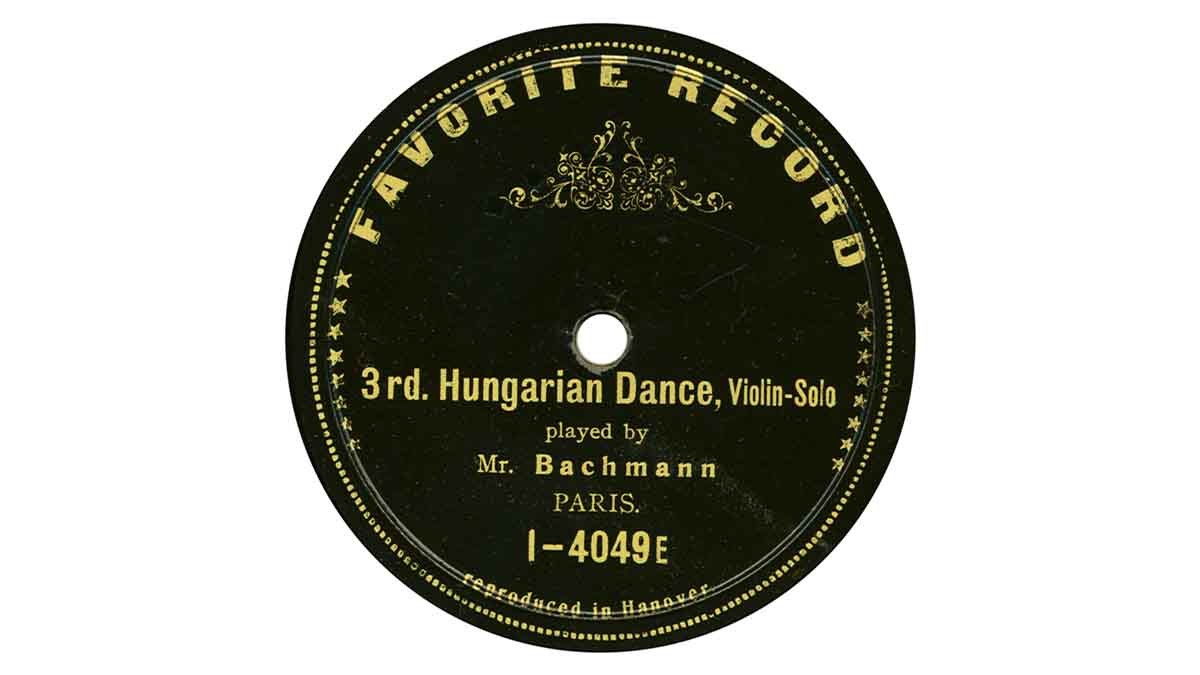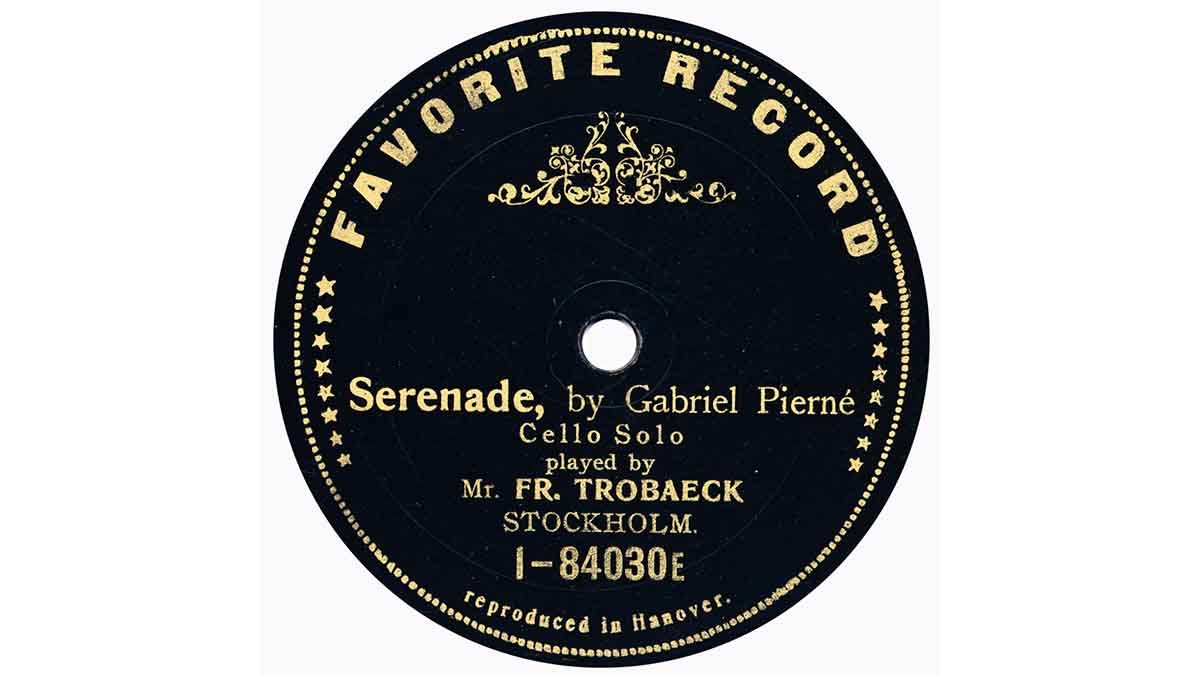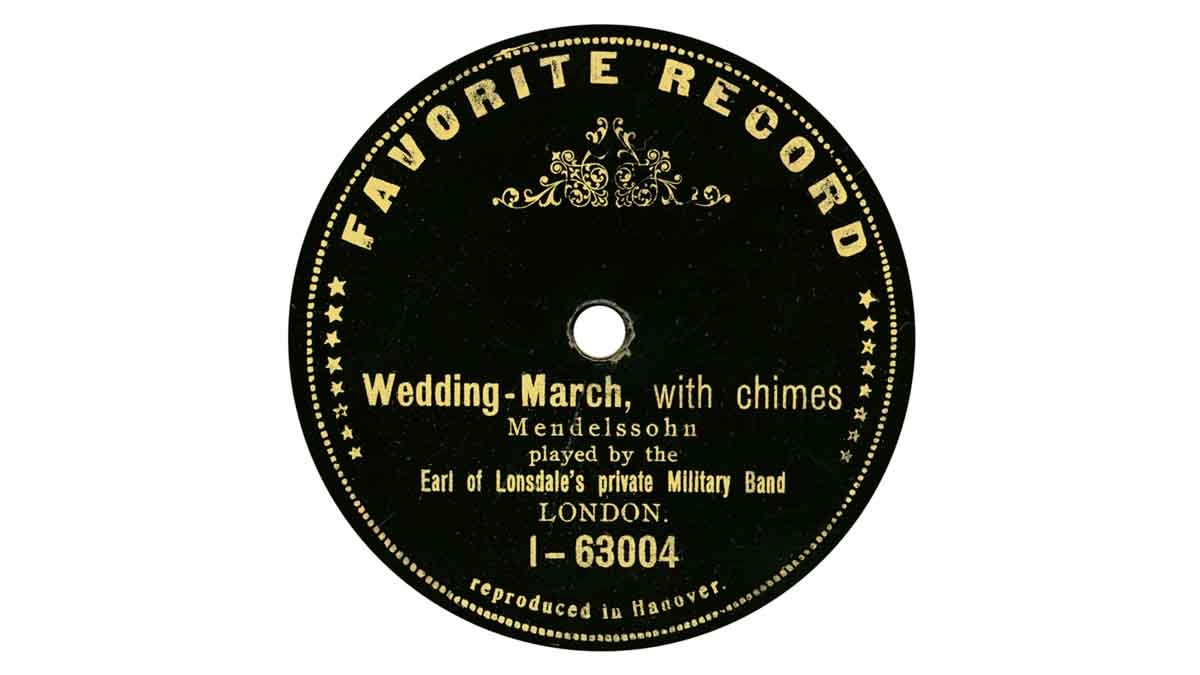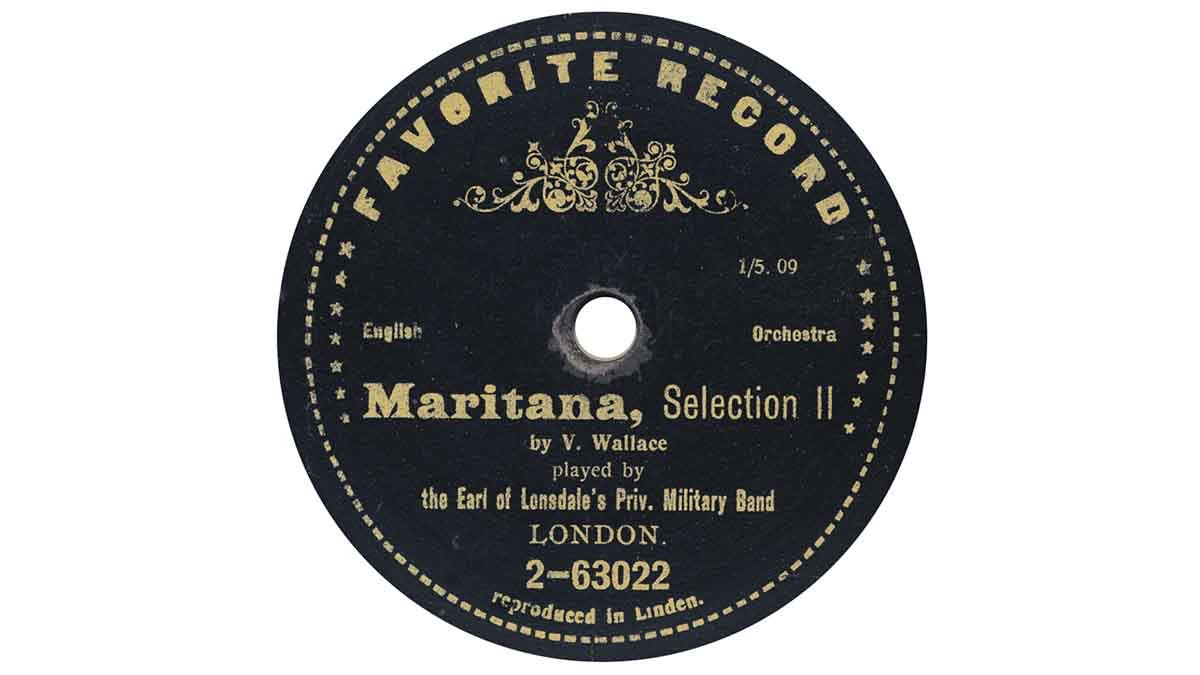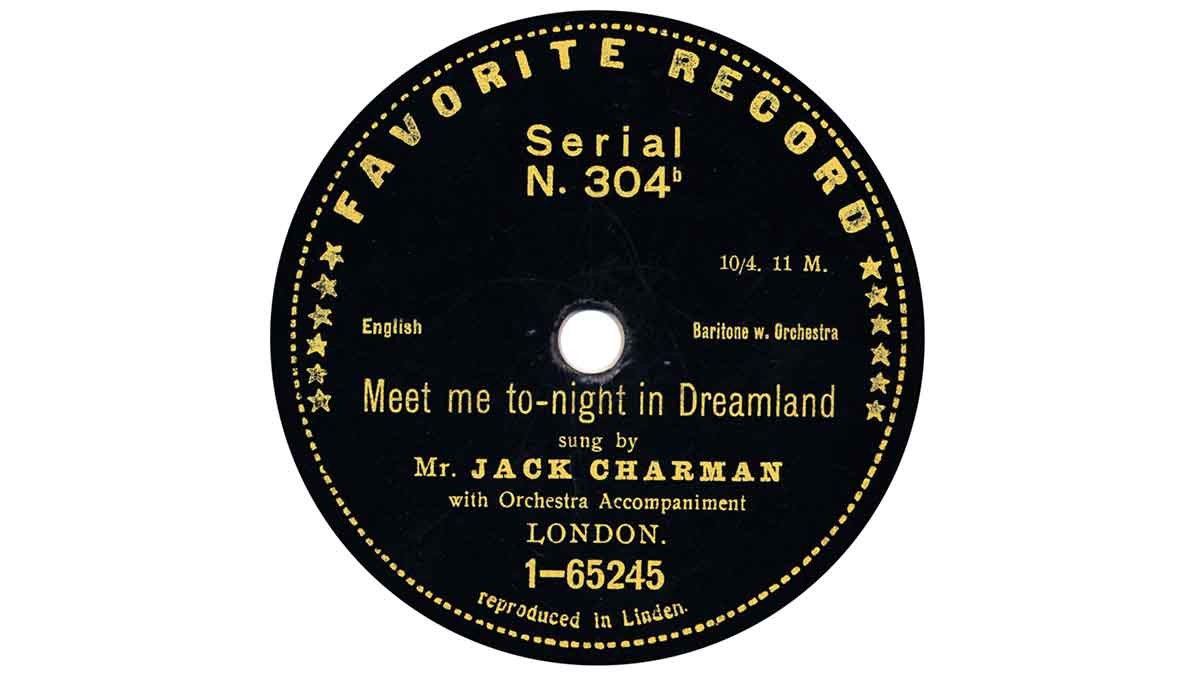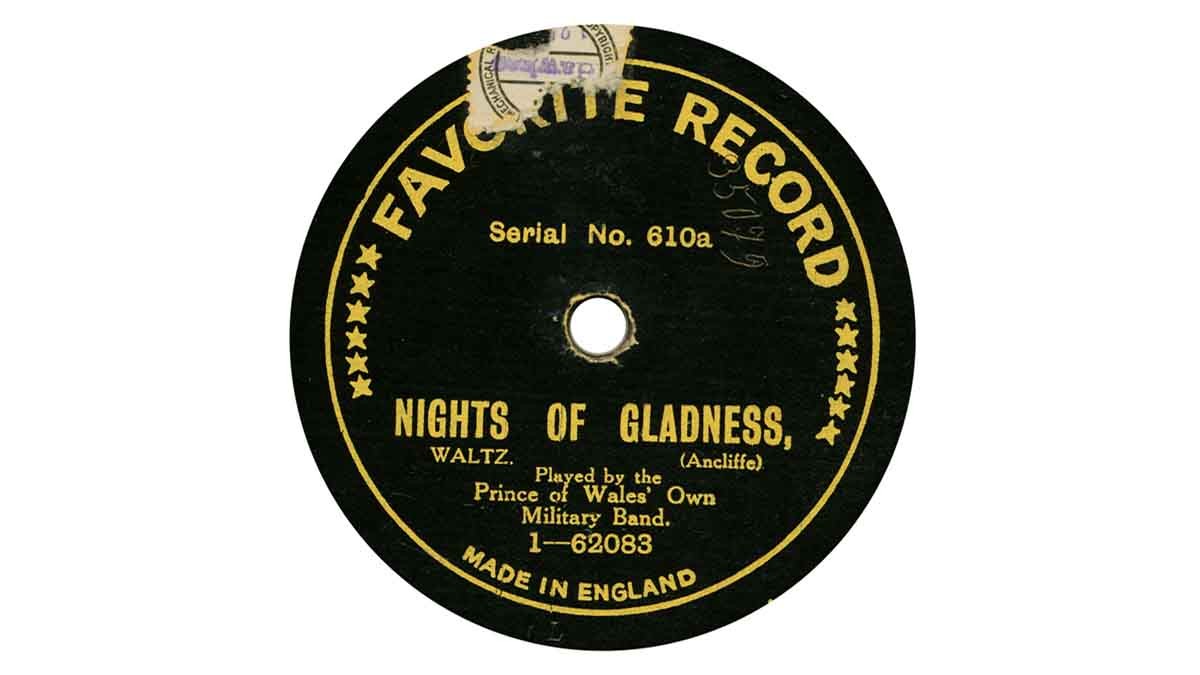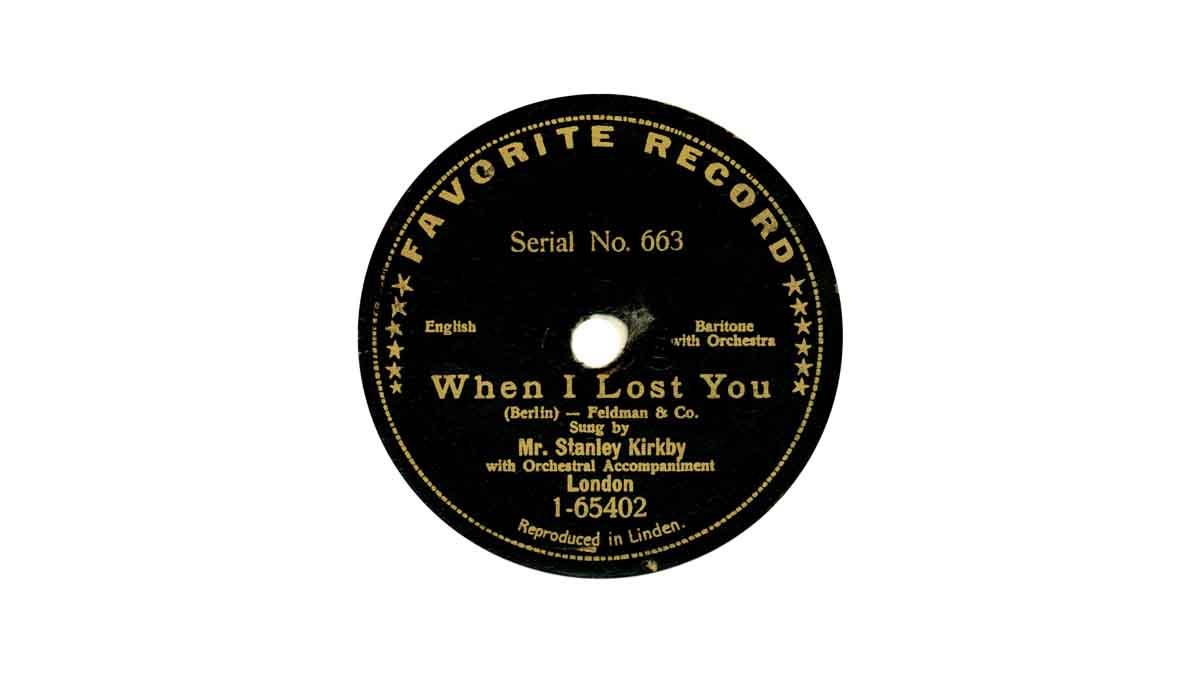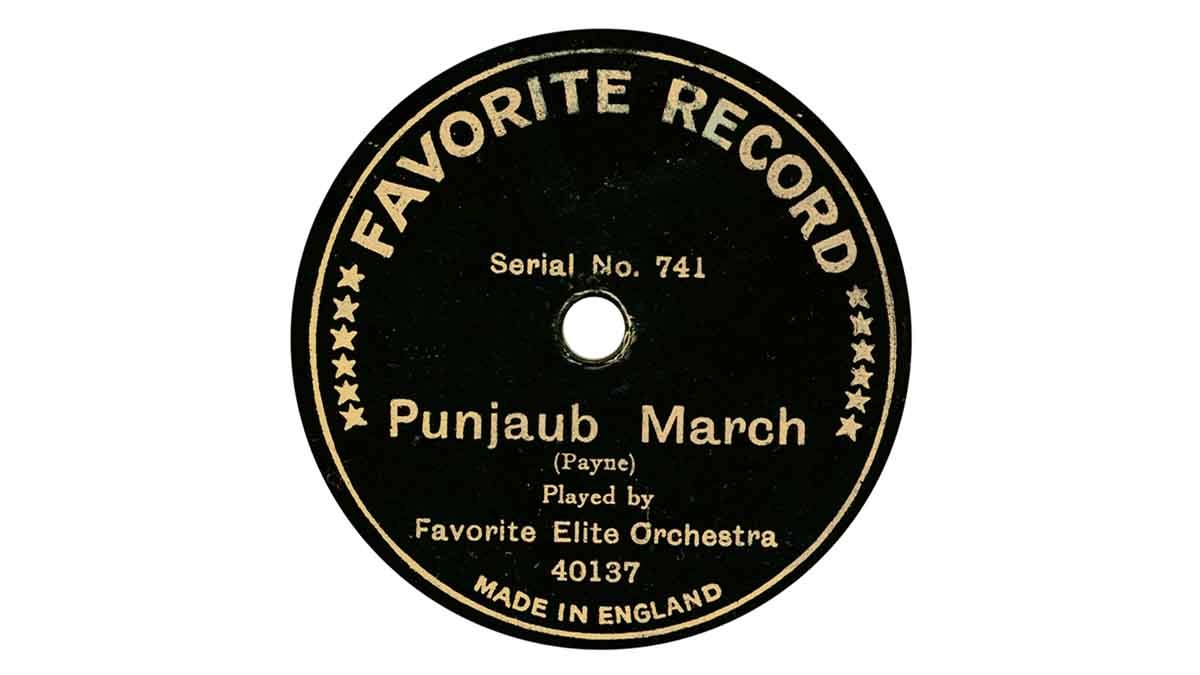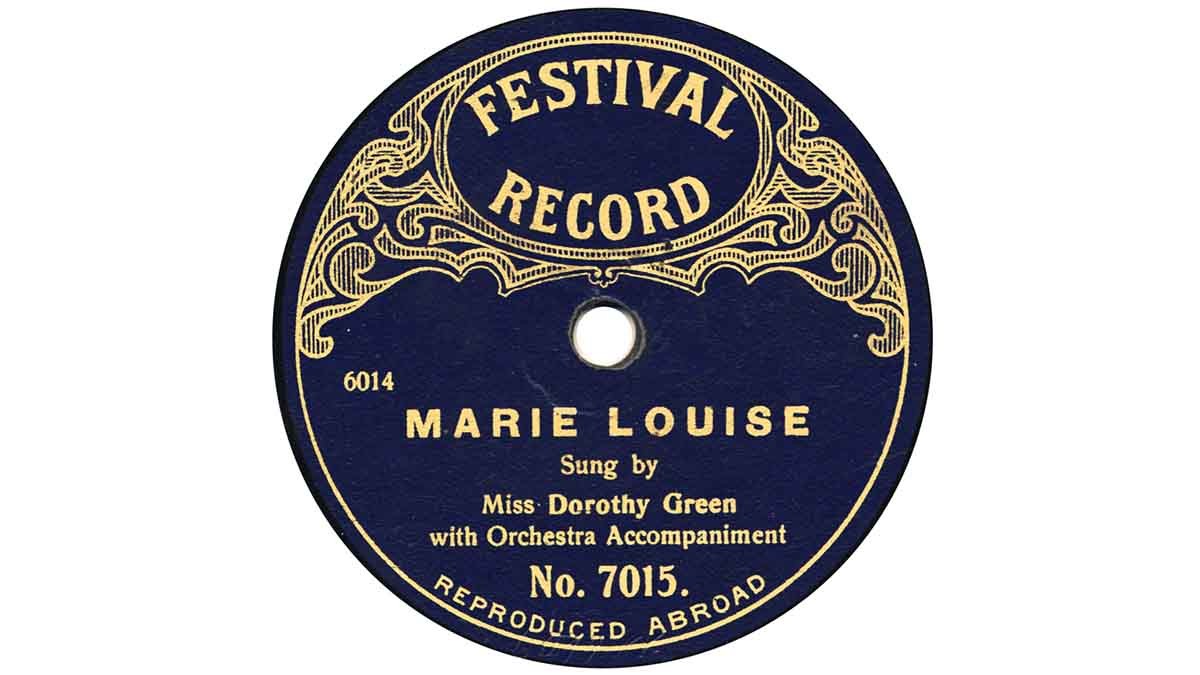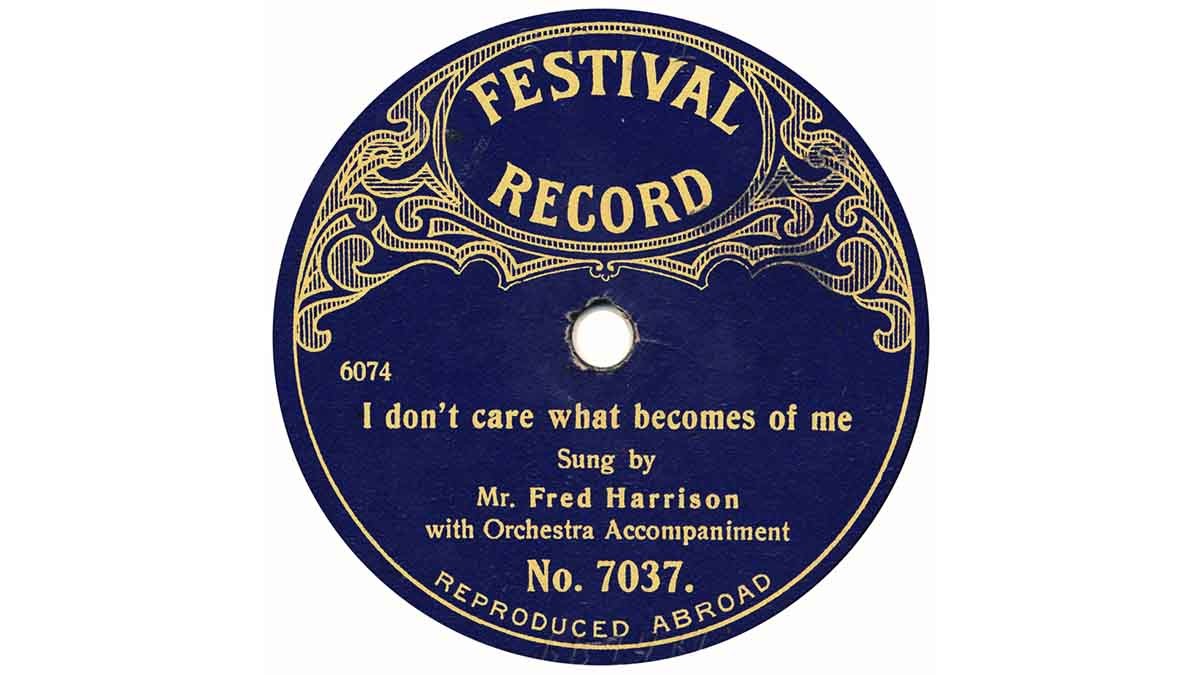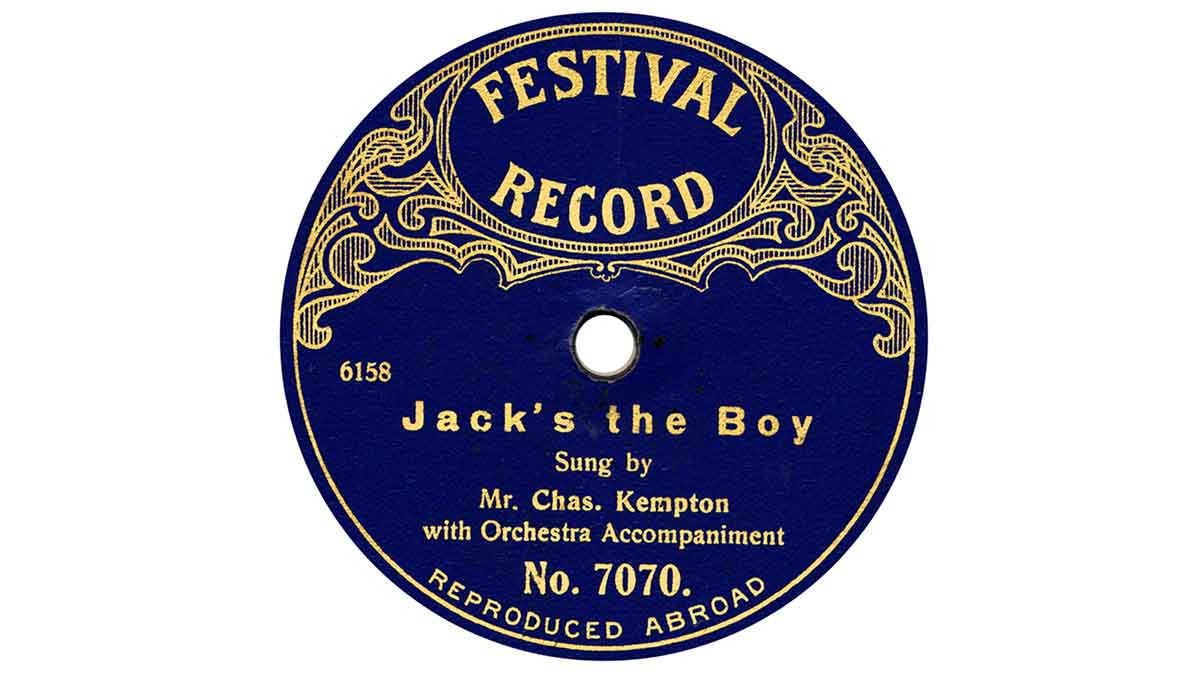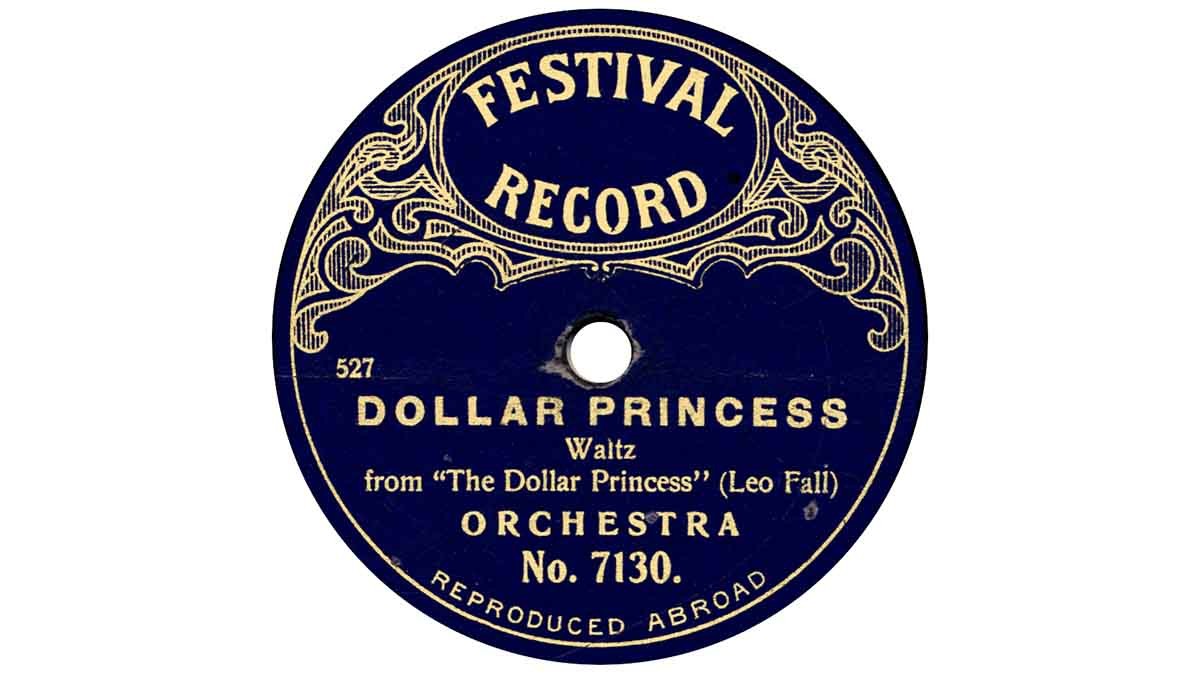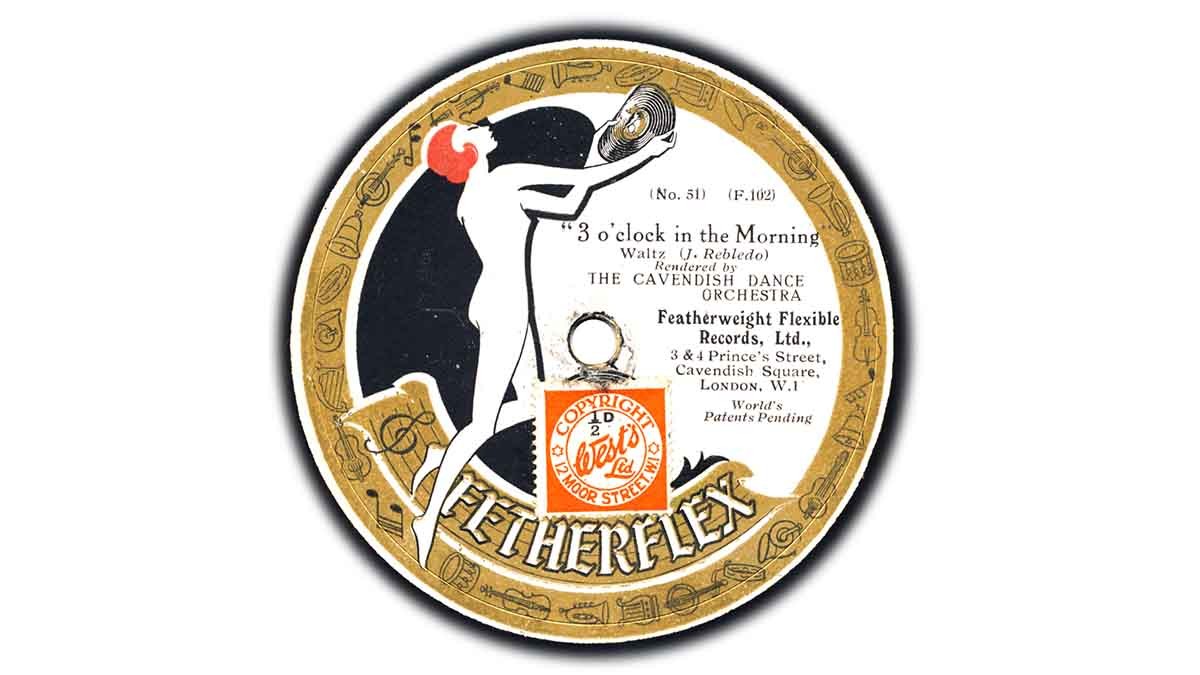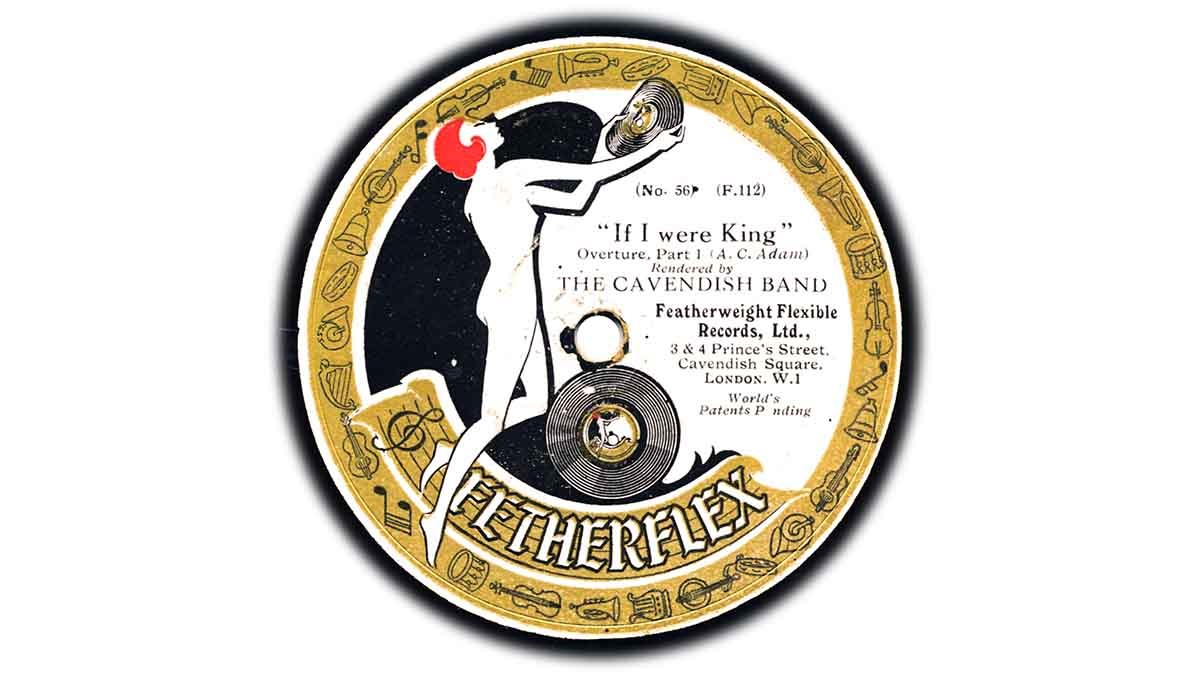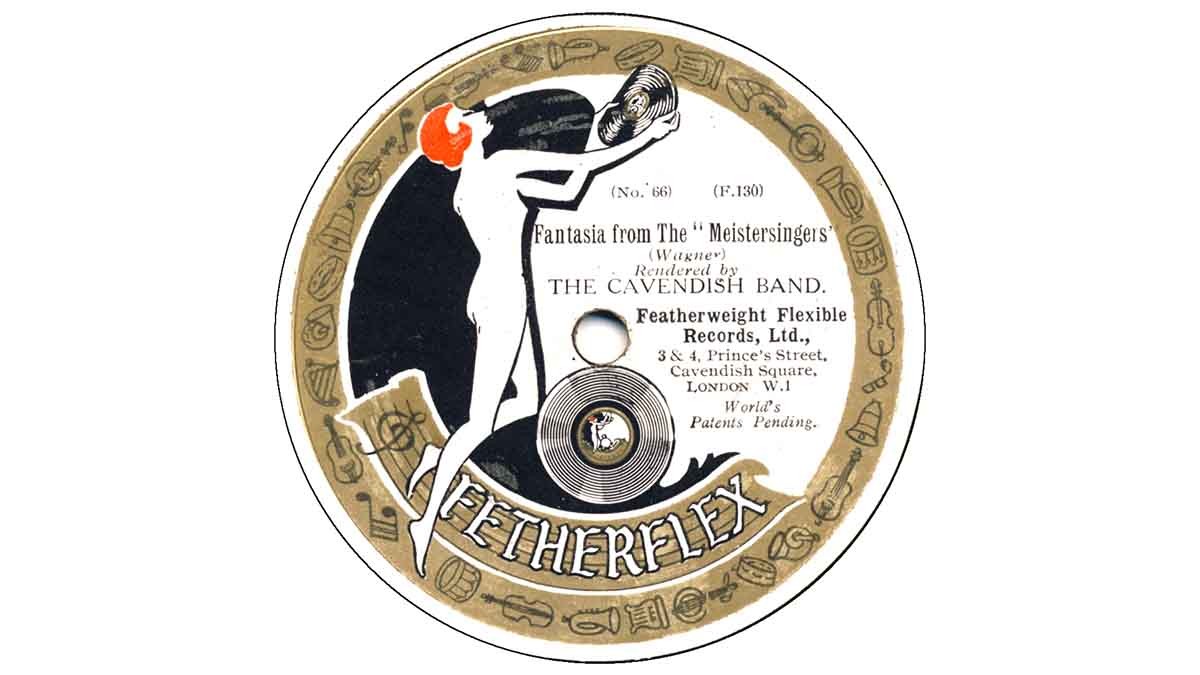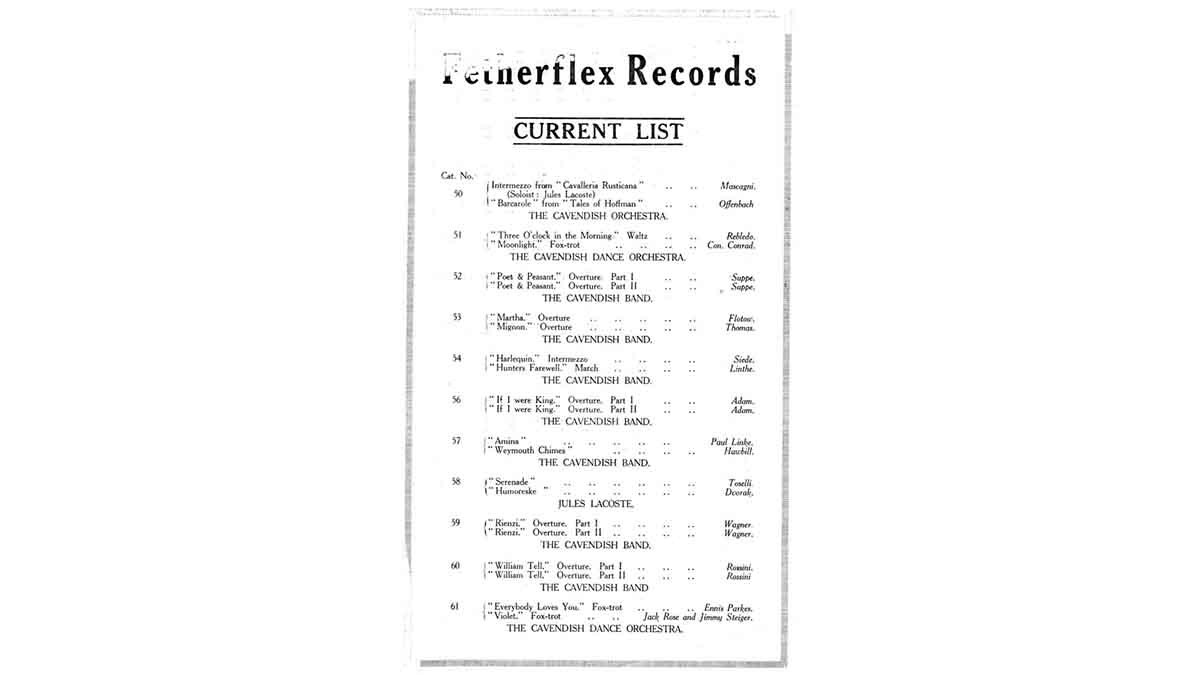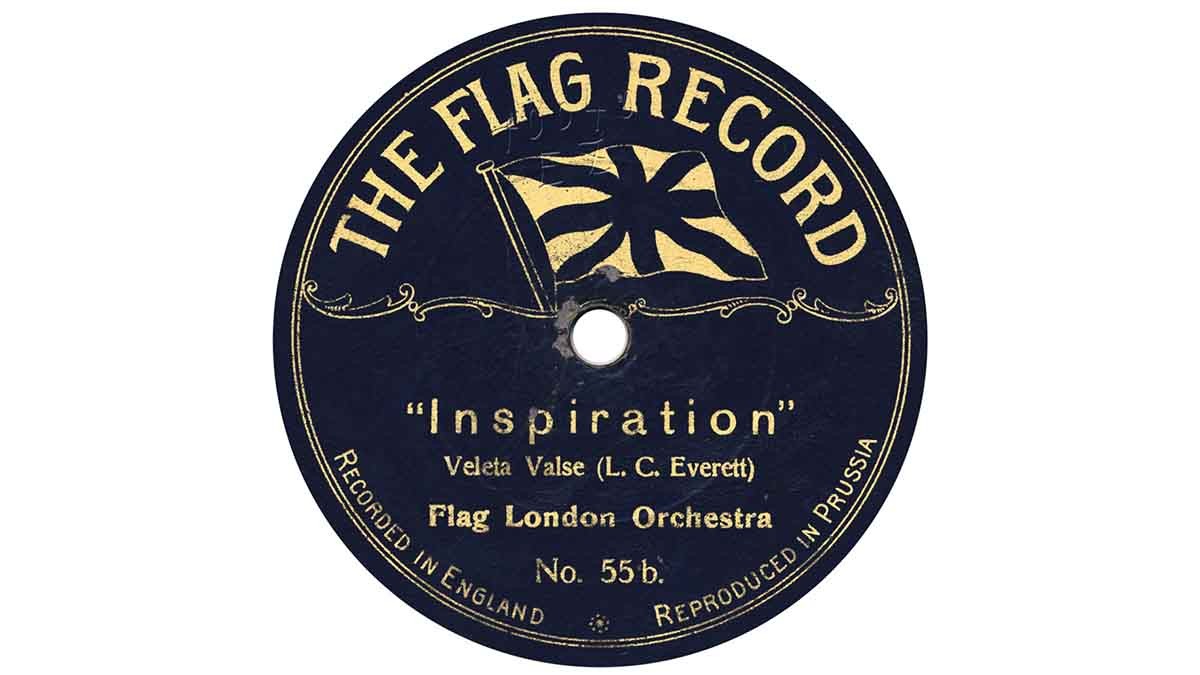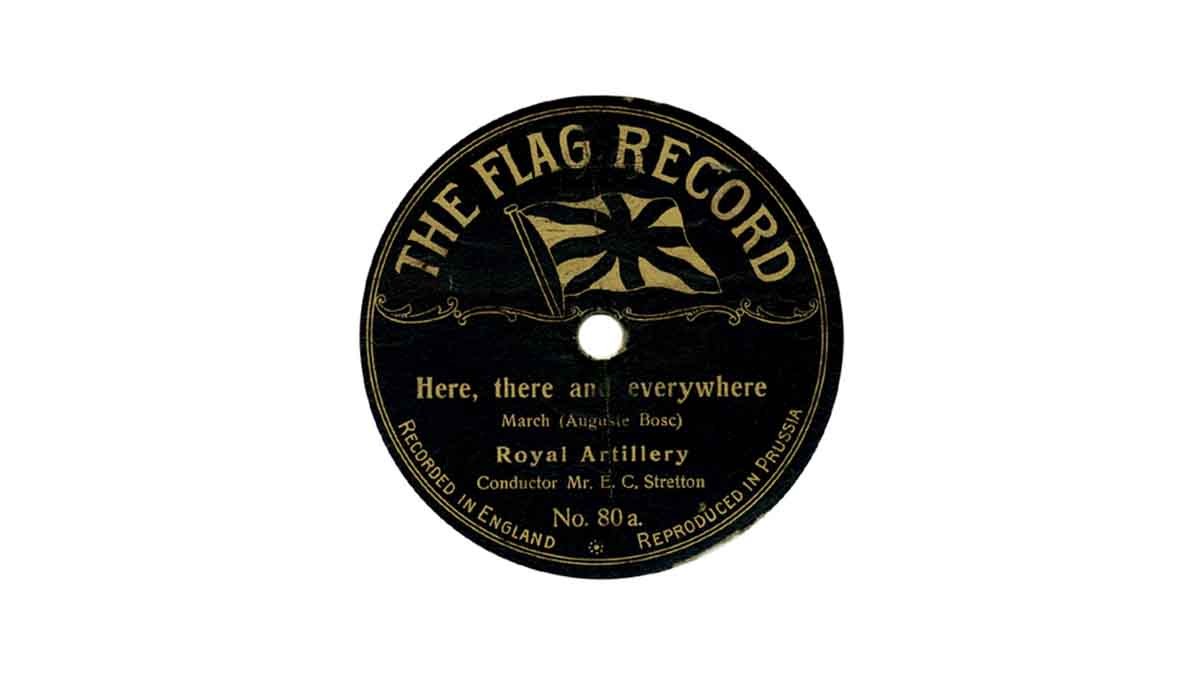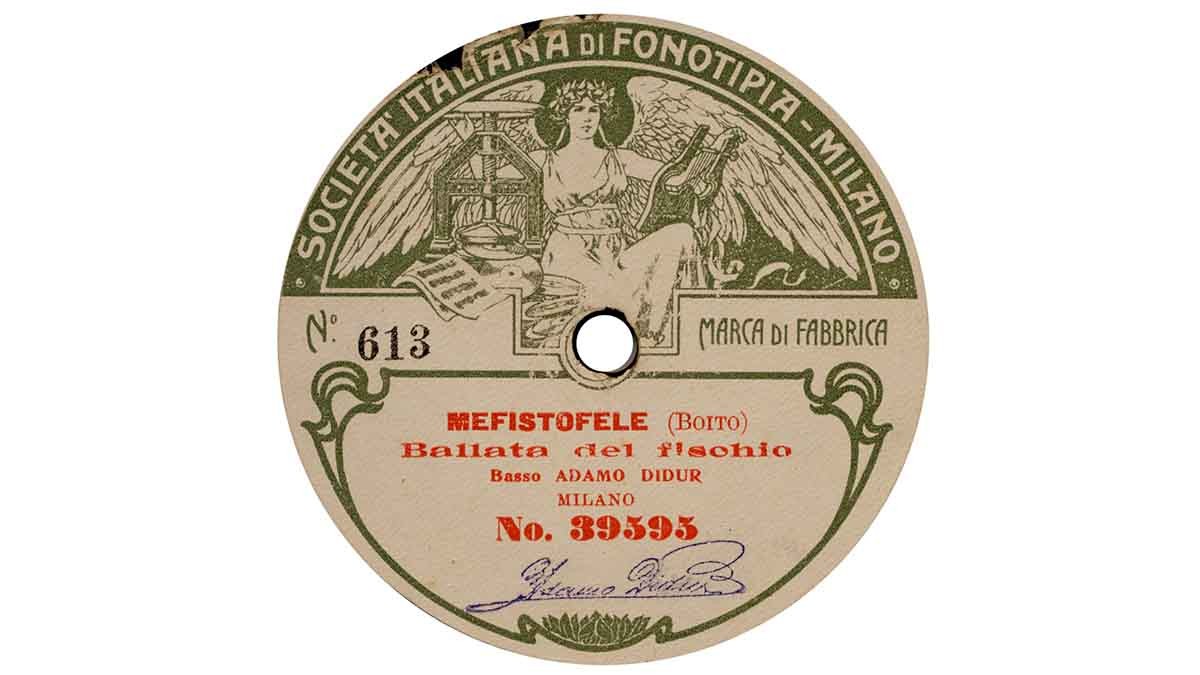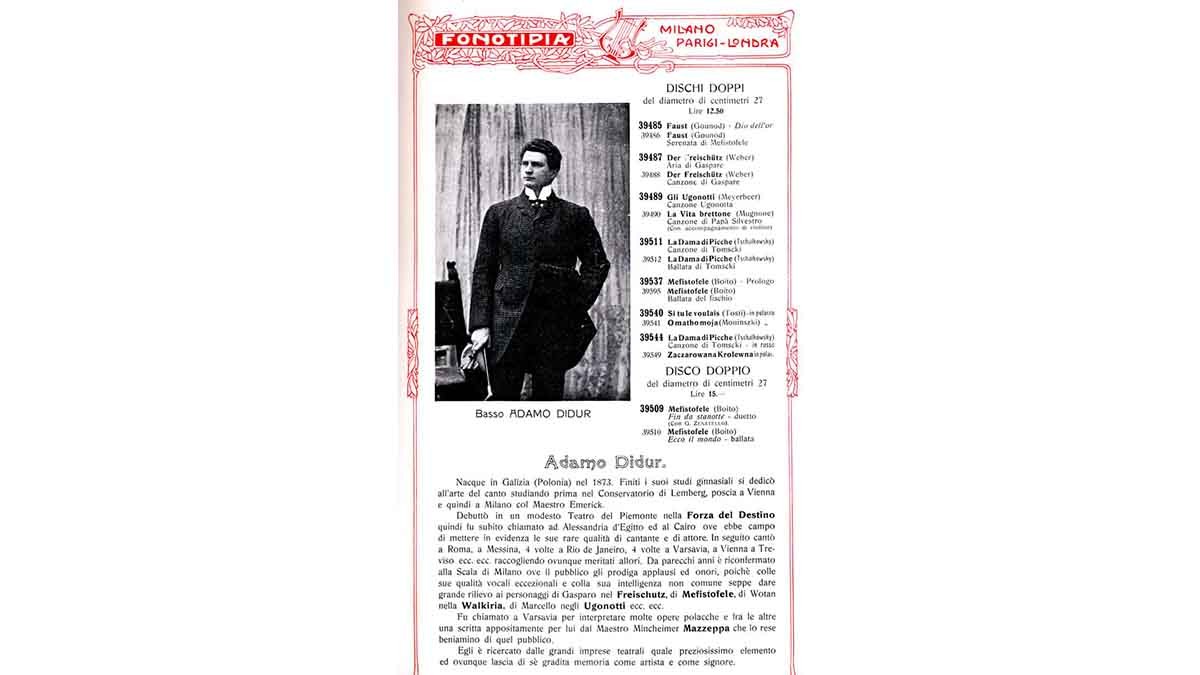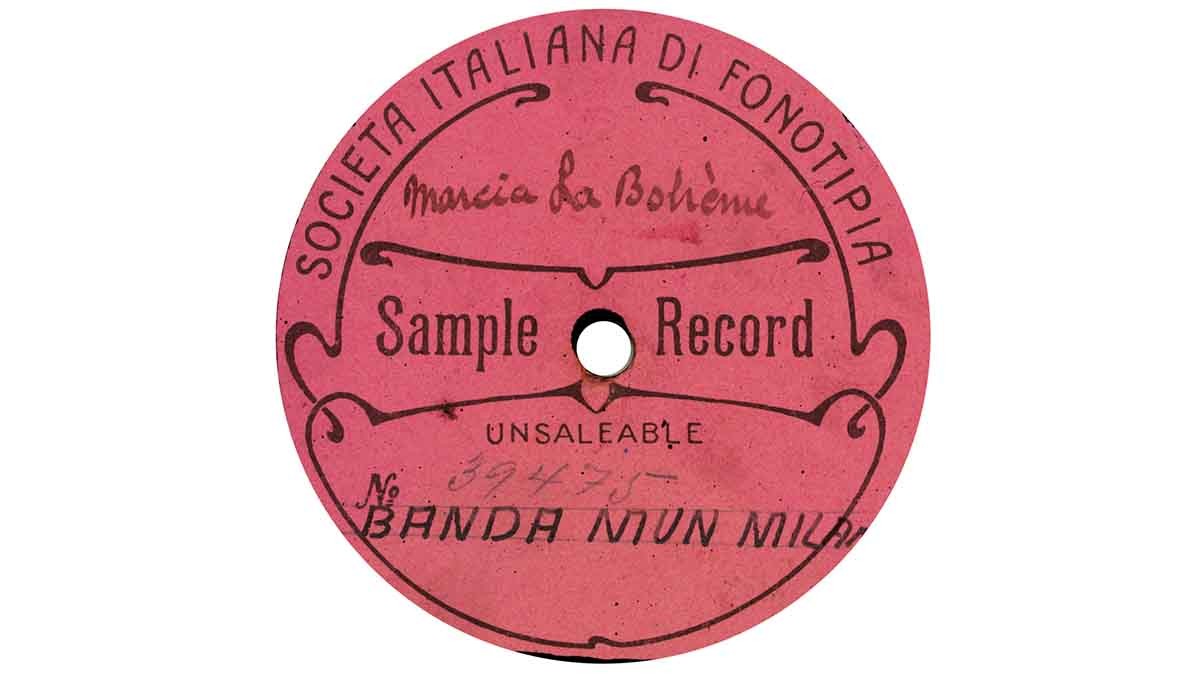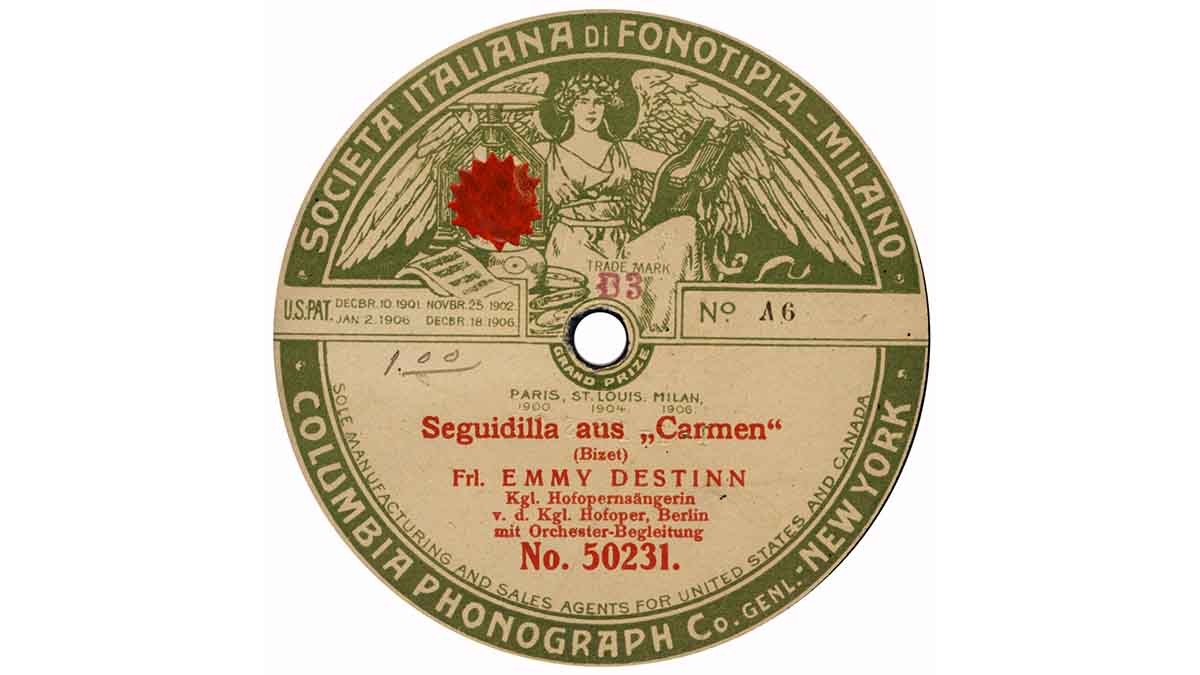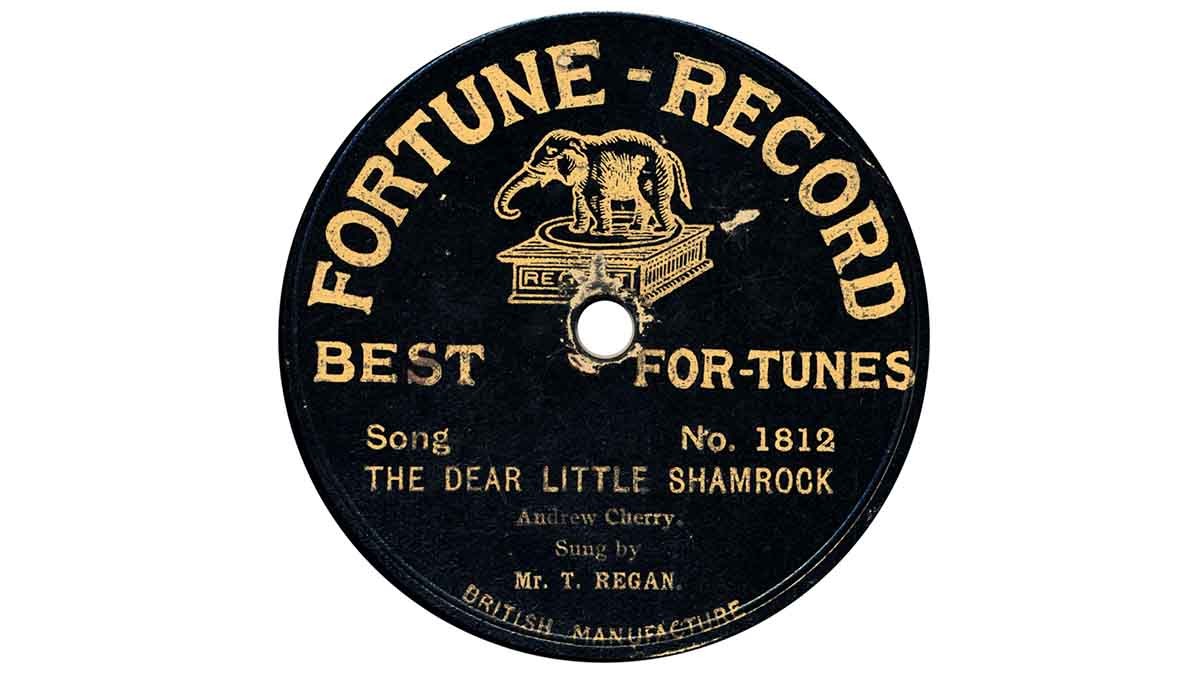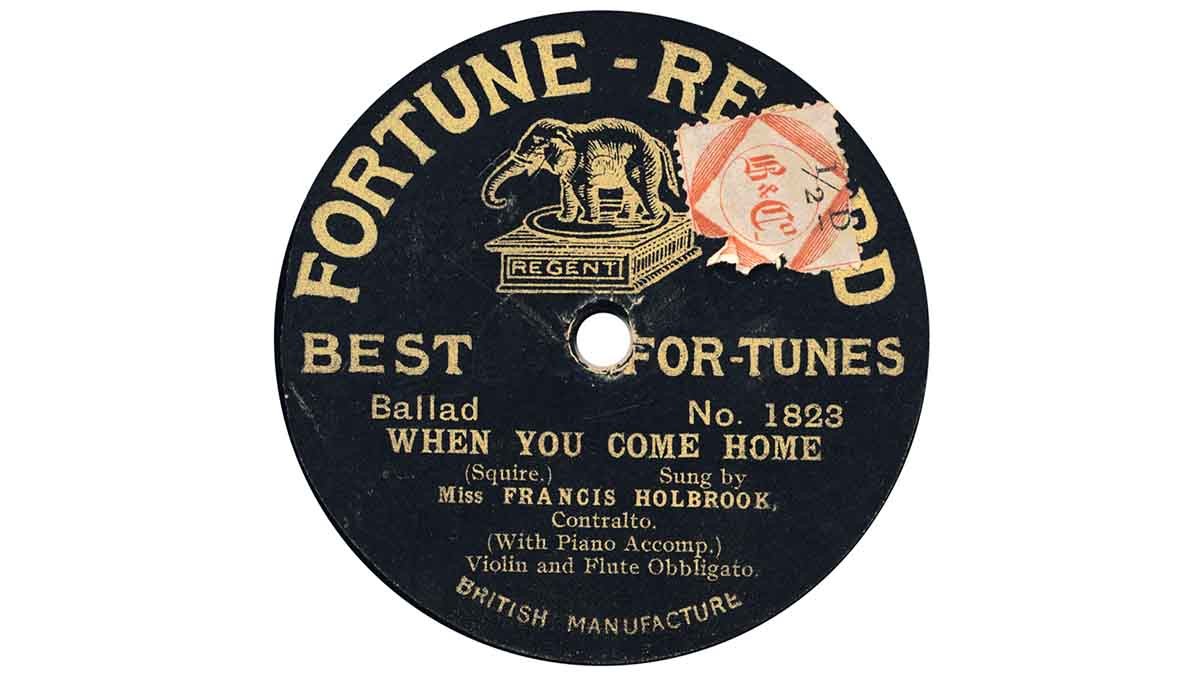
Fairy
See Arthur Badrock, TMR 93, 1996; also Frank Andrews, HD 233. 2001. Initially, two companies made these small childrens’ discs: The Aeolian Co., (better known as Vocalion), and J.E. Hough Ltd., (better known as Edison Bell). Both appeared in 1922. Edison Bell had introduced their ‘The Bell’ records, of 5.375″ (13.5cm) for themselves; while Vocalion had made theirs, called ‘Little Marvel’, for Woolworths stores. They were, however, perfectly prepared to use these masters for other clients. But who those clients were, is unknown to us. After 1922, Vocalion alone made Fairys. These became larger, at 6″ (15.25cm). Grateful thanks are due to my friend Mike Thomas for advising us on these matters, in which his expertise far exceeds ours. Also, we have just learned, thanks to Jeff Silvey of Melbourne, that the later Vocalion Fairys were also sold in Australia. Vocalion had a branch in Australia, so that makes sense; but whether Vocalion put them out themselves, or supplied them to independent factors, is still unknown to us.
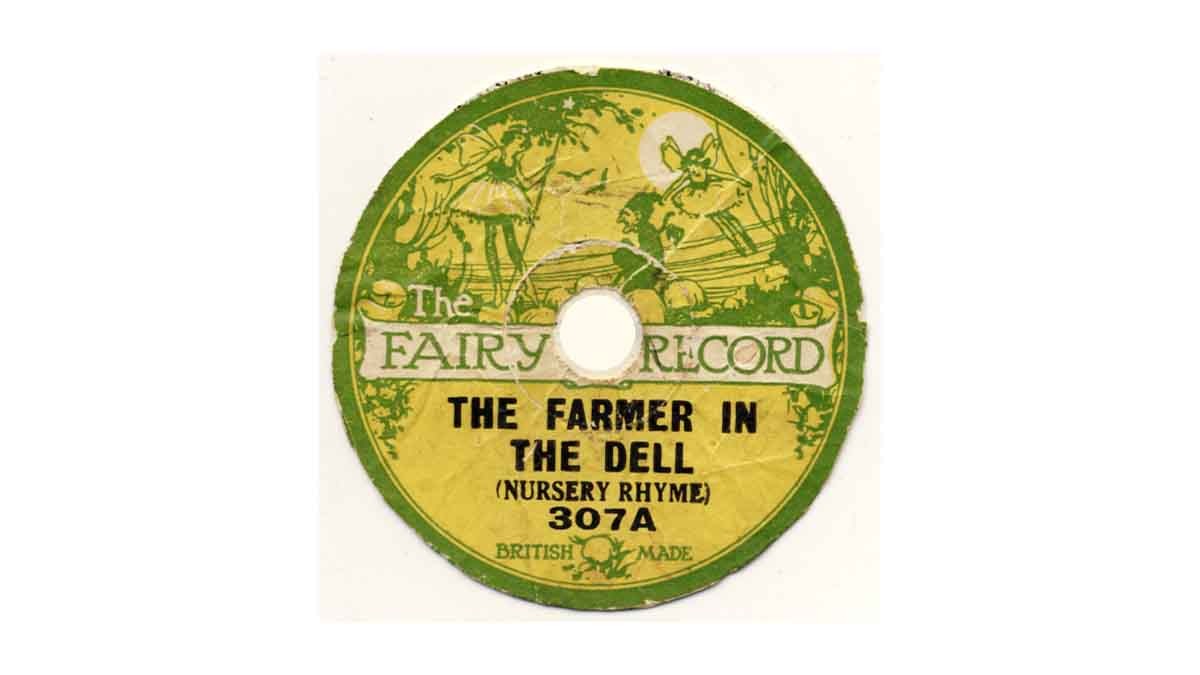
Famous
See Frank Andrews, HD 233. 2001. The proprietor of Famous records was Joseph Blum & Co, who also had the Diploma, Stella and Victory labels. All these (except the early Diplomas) were initially pressed by Kalliope in Germany, from Blum’s own masters. Most of these were recorded on Blum’s premises in London, but German recordings of standard marches, overtures &c. were included in the series. The metalwork, of course, resided at Kalliope’s factory in Saxony. Unlike his others, the Famous label did not show any connection with Blum & Co; neither did Blum advertise them. They were distributed by Lugton’s, and as both concerns were in Old Street, London, it is quite possible that Famous records were produced at the behest of Lugtons. They appeared in early 1913. However, quite soon, a complex series of law-suits took place between Blum and Kalliope, and afterwards Famous records were pressed by another German company in Prussia. After the outbreak of war in August 1914, Famous records were pressed by the Disc Record Co. in Harrow, again from freshly-recorded Blum masters. These have purple & gold labels. Famous 62 above is interesting; somebody has gone to the trouble of painting, with gold ink, a thicker frame at the foot of the label to obliterate the now-intolerable ‘Recorded in England, Pressed in Saxony’. This is quite often encountered. The public might keep their records, but gouge out or obliterate any German reference. Here, however, some little care has been taken, so this might have been done by a dealer, in order to shift some German-made records, which would otherwise be dead weight on his shelves – and on those of every other wholesaler and dealer too! Blum & Co. went to the wall in 1915 – as did the DRC. Famous records must have sold relatively well during their short life, as they turn up occasionally.
Favourite
See Frank Andrews and Bill Dean-Myatt, “Favorite Records: A Discography”. CLPGS Reference Series No.8, 2010. This is one of the excellent ‘New Wave’ discographical publications. It is very modestly priced. Get it from the CLPGS bookshop at: www.clpgs.org.uk
The above 24 page A5 booklet contains a full history of the very important German company Favorite, and furthermore, has with it a CD-ROM which carries a 139-page listing of all the thousands of known masters that appeared here. They were recorded not only in London, but all over Europe. Details are also given of many of the client pressings that Favorite made for British firms. It is an invaluable publication. Favorite discs had a UK presence from 1906 – 1916. Their first issues are single sided, and these are very scarce. They bore an impressive design on the reverse, as you see in the first scan. Their numbering system is meticulous: it encodes record size, country of origin, type of repertoire, and even a suffix when issued in another country – which many of them were. A date often appears on the label, either in plain form, or often in Arabic numerals. Read more about this in the CLPGS booklet. In early 1914 they were absorbed (along with Dacapo and Lyraphon) into the ever-growing Carl Lindström A.G. This resolves the oddity of Favorite 741 above: a Favorite pressed from a Beka master. By October 1914 – when 741 was issued – they were but different wings of the same company. Still, it was rather ironic that a German-owned company was issuing patriotic war-time repertoire in the U.K! Our government increasingly though so too, and in 1916, the British branch of Lindström was taken over & its assets confiscated by the Board of Trade, including its factory in Hertford. The last Favorite in this series (it got to about 960) came out in May 1916, but already, as you can see from the woefully off-centre label of 819, ‘things were not what they were’ – indeed, they never would be, ever again…
Festival
See Frank Andrews, HD 234, 2001. This very rare German-pressed label is a stencil of Globophone; indeed, the label design is identical apart from being in violet or blue rather than Globophone’s green. Naturally, they mostly have the same 6000 master series suffixed ‘KV’. It is not known for whom they were produced; but they were made by Schallplattenfabrik Globophon GmbH of Hanover. The -KV suffix, it was pointed out by Dr Rainer Lotz, are almost certainly the initials of Karl Vogel, an early recording expert, and these 6000-KV masters were also used on Eclipse, one type of Apollo record, and one type of Playwell – Regent. I have seen about 10 or 12 of these masters and all are of British material. It may therefore be that this series was made by Vogel in London to the order of Globophon, at one of the several independent recording rooms that existed there. Havng said that, Fesitval 7130 has masters 527 & 528, so they must have come from another source; sorry, we have no idea what it might have been!
Fetherflex
A listing of various labels associated with the charismatic personality Nöel Pemberton Billing was published in 1992. It is still available. “World Records, Vocalion W, Fetherflex and Penny Phono Recordings’, by Frank Andrews, Arthur Badrock and Edward S Walker. 71pp A5 format. Spalding, Lincolnshire 1992. Just go to the bookshop at www.clpgs.org.uk to check it out. The bulk of the book is about World Records, but there are four crucial pages of information on Fetherflex.
Fetherflex records appeared in November 1923. They were extremely thin (~0.75mm), lightweight (~40g), flexible, and were yet another brainchild of the restless enterprise of Noël Pemberton-Billing (1881-1948). Alas, they prospered not, and the company was in liquidation by May 1924. They are extremely scarce, but play tolerably well if in good condition. About 70 issues were made, though none between 6 and 50 has ever been seen. It has been said that some of the material was of German origin. On Fetherflex 56 is the overture to Adolphe Adam’s 1852 opera-comique ‘Si j’étais Roi’, in which a Turkish ‘splash’ cymbal is often heard. This is a quite reliable diagnostic feature of German bands, so that opinion is probably correct, though from what source such masters may have come is still unknown. The Piccadilly label of 1928 has a virtually identical design, but the reason for this is, as yet, quite unknown. A listing – with the curious gap – was printed in brown on cream paper, a very common ‘classy’ colour scheme of the time, but there was insufficient contrast, so it was reduced to B&W.
Flag
See Frank Andrews, HD 233. ‘The Flag’ records were made by Beka for an outlet as yet unknown even to Frank. Although several hundred issues may have been made, it remains a very rare label. Circa 1912. 12″ discs were also made; they have lilac and gold labels, like the Beka Meister records from which they were derived. Possibly a tallyman label – see John Bull for details.
Fontopia
See Frank Andrews: ‘A Fonotipia Fragmentia’ TMR 40, 41, 42, 44, 45. June 1976 – April 1977 . This is one of Frank Andrews’ early masterpieces of discography; an exhaustive history of the immensely prestigious Fonotipia concern, and its important affiliates, Odeon & Jumbo, &c. The whole venture was conceived in Italy as a high-class project, specializing in the finest operatic artistes and repertoire. Other material appeared as well, e.g. instrumental sides by the Band of the Royal Italian Navy (usually mis-translated as The Italian Marines Band), but opera predominated, by far. Everything about Fonotipia was imbued with class! The gorgeous label and splendid trade mark; the discs – which were naturally costly – were sent out with a small sticker over the centre hole, so that the purchaser would know they had never been played; there was a sumptuous illustrated catalogue, one of which, happily, has been re-printed in facsimile. They were exported all over the world. The first example illustrated has a Moscow dealer’s stamp in the wax. At one time, U.S. Columbia produced them under licence – see the right-hand label. The history of the companies was nevertheless very complex, and only study of Frank’s articles, can reveal the detail. The first disc above was listed in the 1906 catalogue. The discs were seldom to be found in junk shops, as they were in effect ‘collectors’ items’ right from the start, and so passed direct from hand to hand, or via postal auction. Indeed, it is only within the last 20 years or so that one has seen them at record bazaars. The heyday of Fonotipia in the U.K. was from 1905 to 1916. (Although the test pressing has been titled in ink ‘Municipal Band of Milan’, the master number is definitely by the Band of the Royal Italian Navy; its conductor, Mataceni, has autographed the wax.)
Fortune
See Frank Andrews, HD 233. Another label made for Leon Liebowich’s ‘Regent Fittings Company’. Others include Pickofall, Besttone &c. Very scarce. Ca. 1915-1916. There were 3 series of catalogue numbers. The 1800s, as above, consisted of popular ballads, while the 1900 series was reserved for popular & comic songs. The 2000 series was devoted to instrumental & band recordings; but Frank tells us that these three classes “were never strictly adhered to.” The discs were pressed by Crystalate, & thus were derived from existing masters from the Grammavox and Popular labels.
